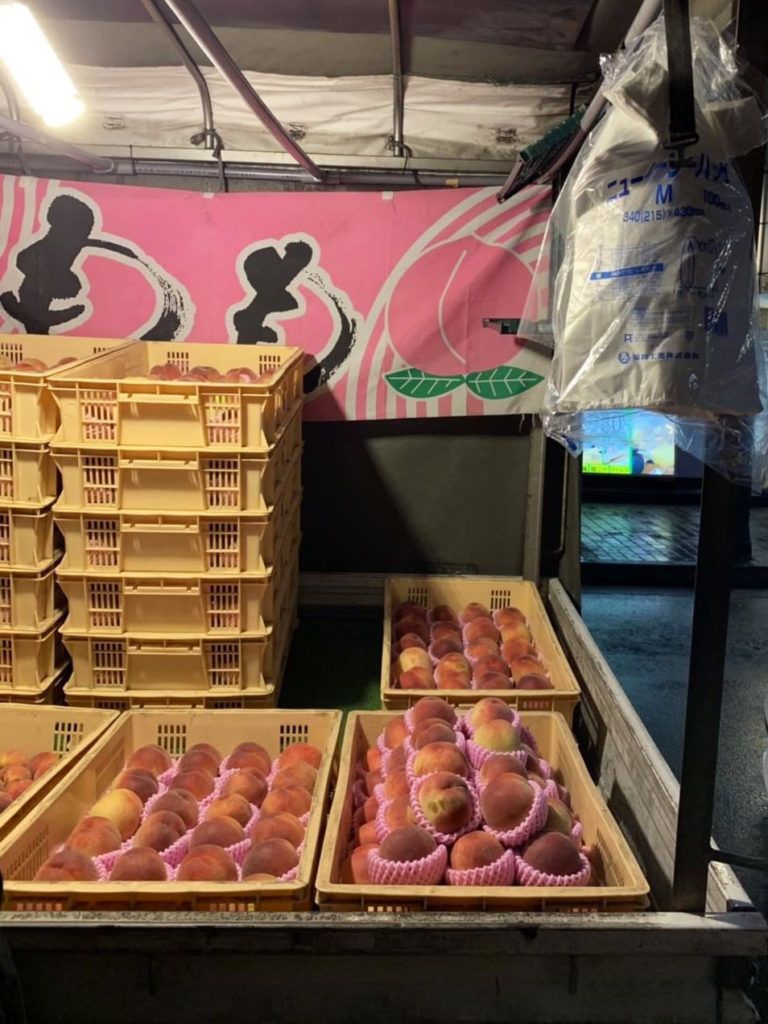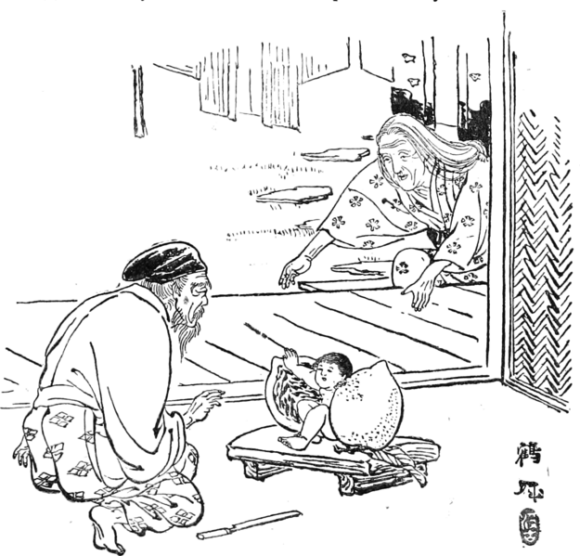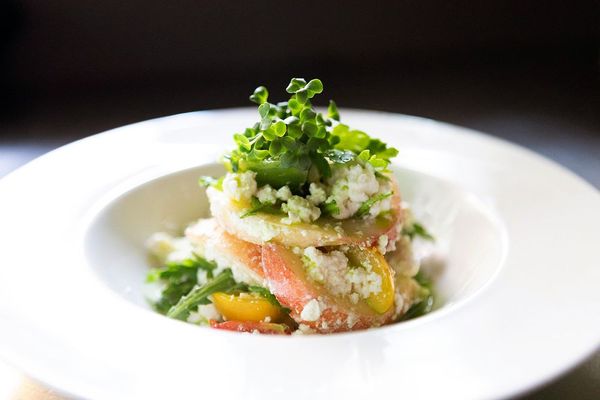Ripe and rosy

The annual arrival of peaches in Japan, known locally as “momo”, is indicated by signage hoisted around June depicting shapely, bottom-like, replicas of the stone fruit.
If you’re used to the peaches of the West, the first points of difference you’ll notice are their size – pushing, on average, a hefty 250g-350g each; and the price, especially if you happen on peaches in a department store or specialty fruit parlor (the Tiffany’s of greengrocers), where they may fetch up to ¥1000 ($10 USD) per flawless specimen.
Peaches are now used mainly for eating in Japan – the most common applications being fruit sandwiches, parfaits, tarts, cakes, and traditional sweets like daifuku. But when they first came to Japan from China in the Yayoi period (300 BC-250 AD), the fruit and flowers were used mainly for medicinal and ornamental purposes; they were quite hard and hairy, more sour and astringent than the peaches of today, with only 20 to 70 g of fruit.

The peach even found its way into Japan folklore, with the famous tale of ‘Momotaro’ (peach boy), a story that emerged around Edo-era or earlier. A small boy found inside a peach by an elderly couple as it floated down a river in Okayama; for the childless couple, he was considered a gift from the gods. Momotaro grew up to become somewhat of a local superhero, befriending a dog, monkey, and pheasant, who helped him in his quest to battle demons.

From the Kamakura period, started to become eaten more commonly, but the large, sweet cultivars known today were mimicked from peaches developed America that made their way to Japan during the Meiji Restoration.
The buxom beauties are grown predominantly in the “fruit bowl” or “fruit kingdom” of Japan – Yamanashi Prefecture, where the soil drainage is good and there’s a marked difference in temperatures between day and nighttime, and between summer and winter – the same reason it’s Japan’s prime grape-growing and wine-making region. Other prefectures they’re found are Okayama, Nagano, and Fukushima.
The Shimizu white peach (Shimizu Hakuto) and its derivatives (Hon Hakuto, Kawanakajima Hakuto, Hakurei, and Okayama Yume Hakuto) are the first to come into season in June. With slightly blushed, sunset-toned skin and bright, cream-colored, firm flesh with a perfect balance of sweet and tang, high juiciness factor. Later in the season, from July-August, golden varieties come to fruition, with their slightly tropical flavor.
Keep your peach and eat it too
Each peaches immediately if you’re a fan of firmer, less sweet flesh, or leave them to for a day at room temperature to become more soft and juicy. Chill peach for a couple of hours prior to eating for a refreshing treat, but over-refrigeration will impact the flavor.
Part of the rose family, with apples, pears, cherry blossoms, quince, almonds, apricots, plums, strawberries, peaches pair well with prosciutto, dairy products, bitter greens, herbs like basil and tarragon, umeboshi, berries, lime, tomatoes, and liqueurs like Cointreau and amaretto.
Naito-san of Naito Farm in Yamanashi (find his peaches at the UNU Farmers Markets) like to enjoy his peaches sliced and topped with some fruity olive oil and a sprinkle of salt, or, in what could be summer’s perfect combination, with a cold beer.
Try: Peach, ricotta & shiso oil shiroae


